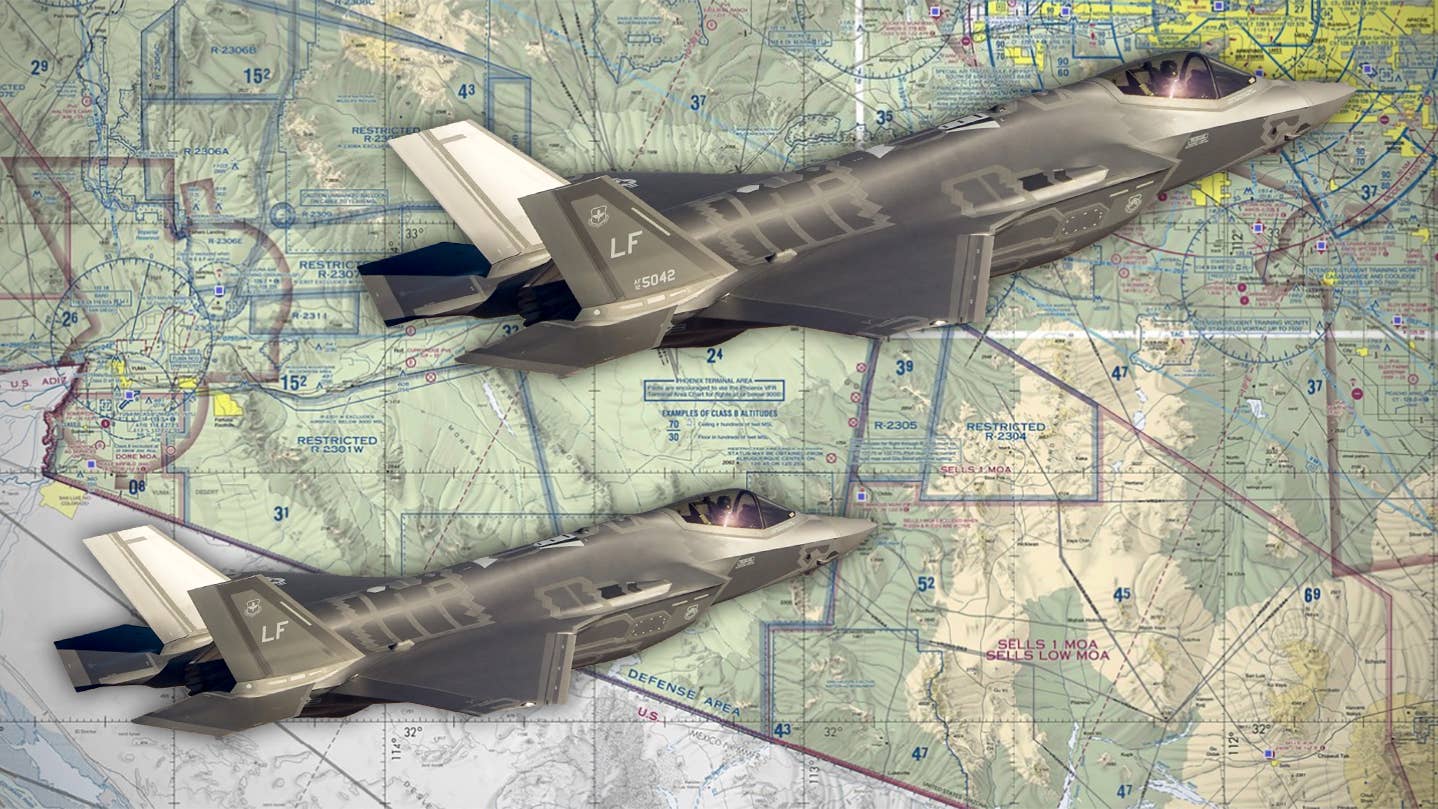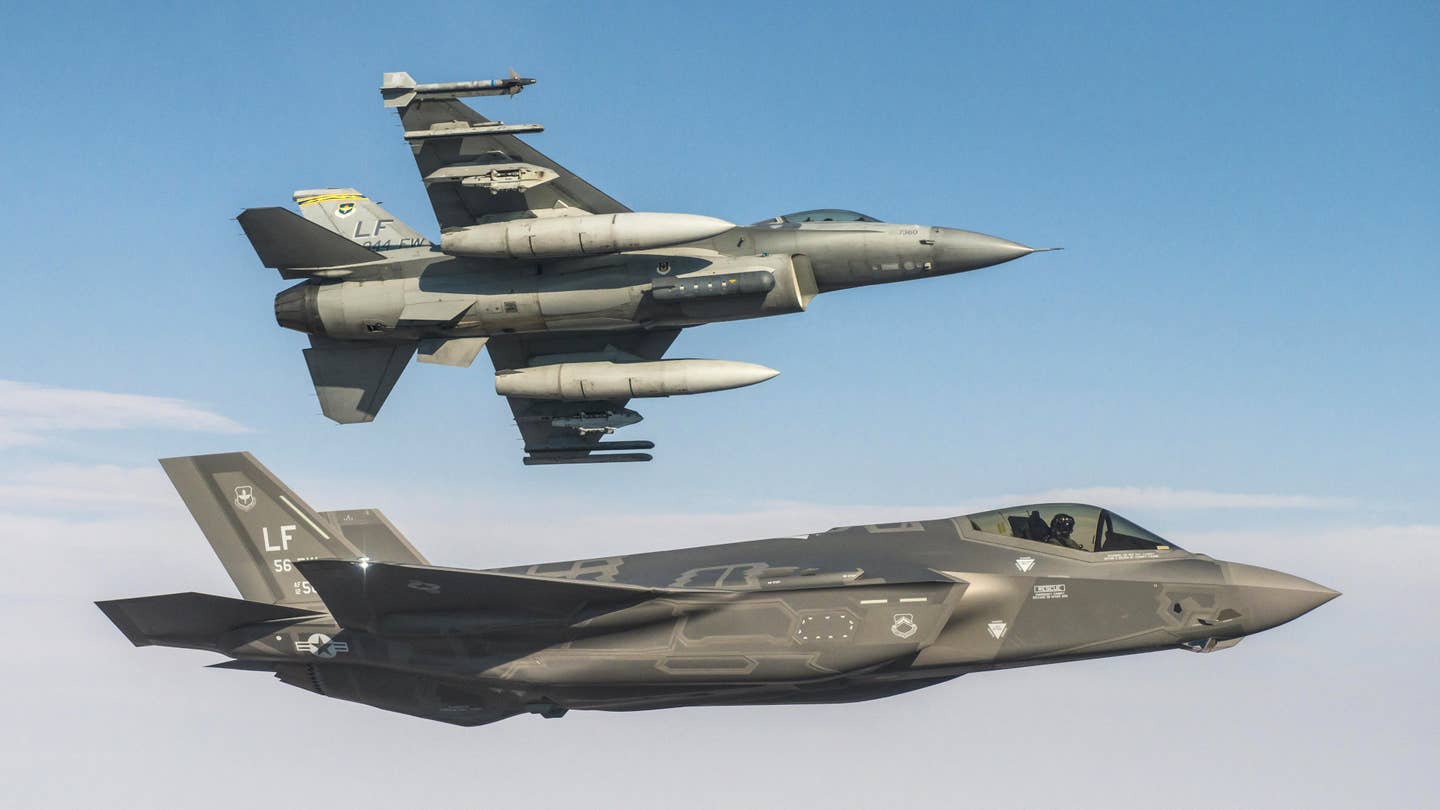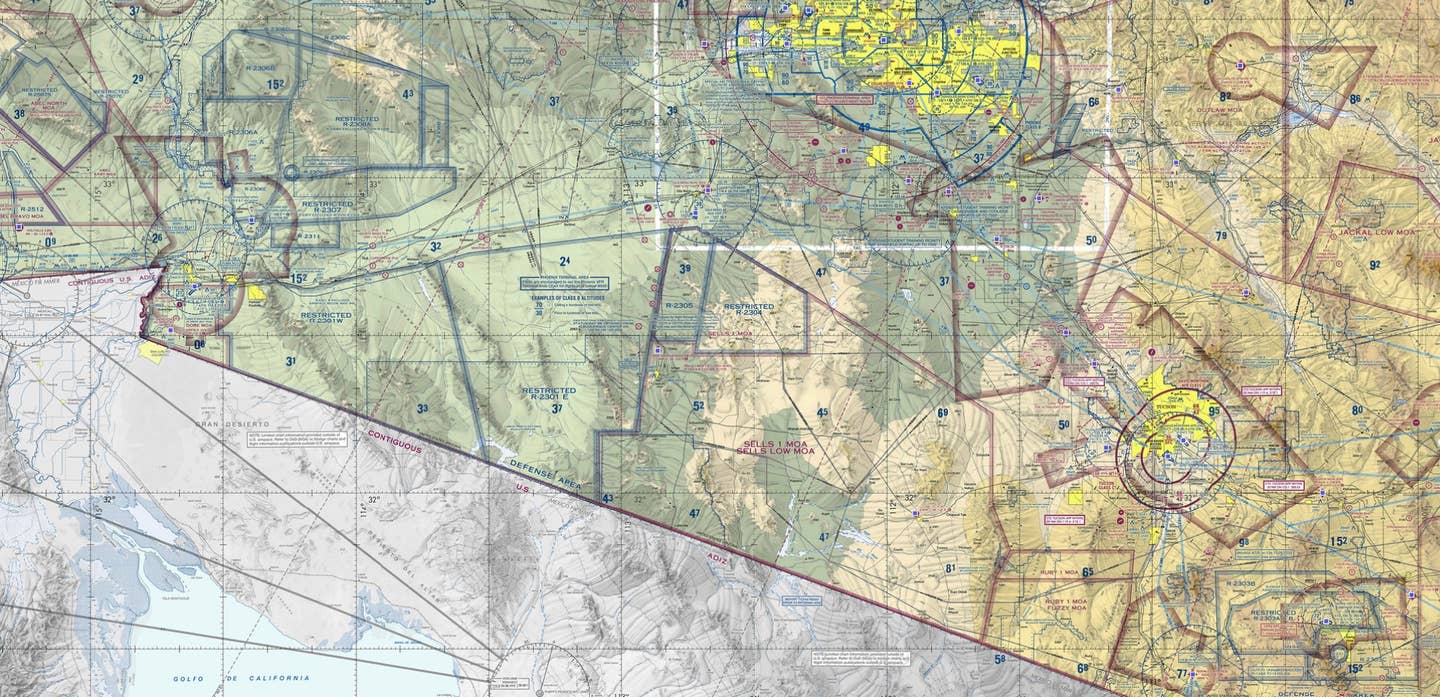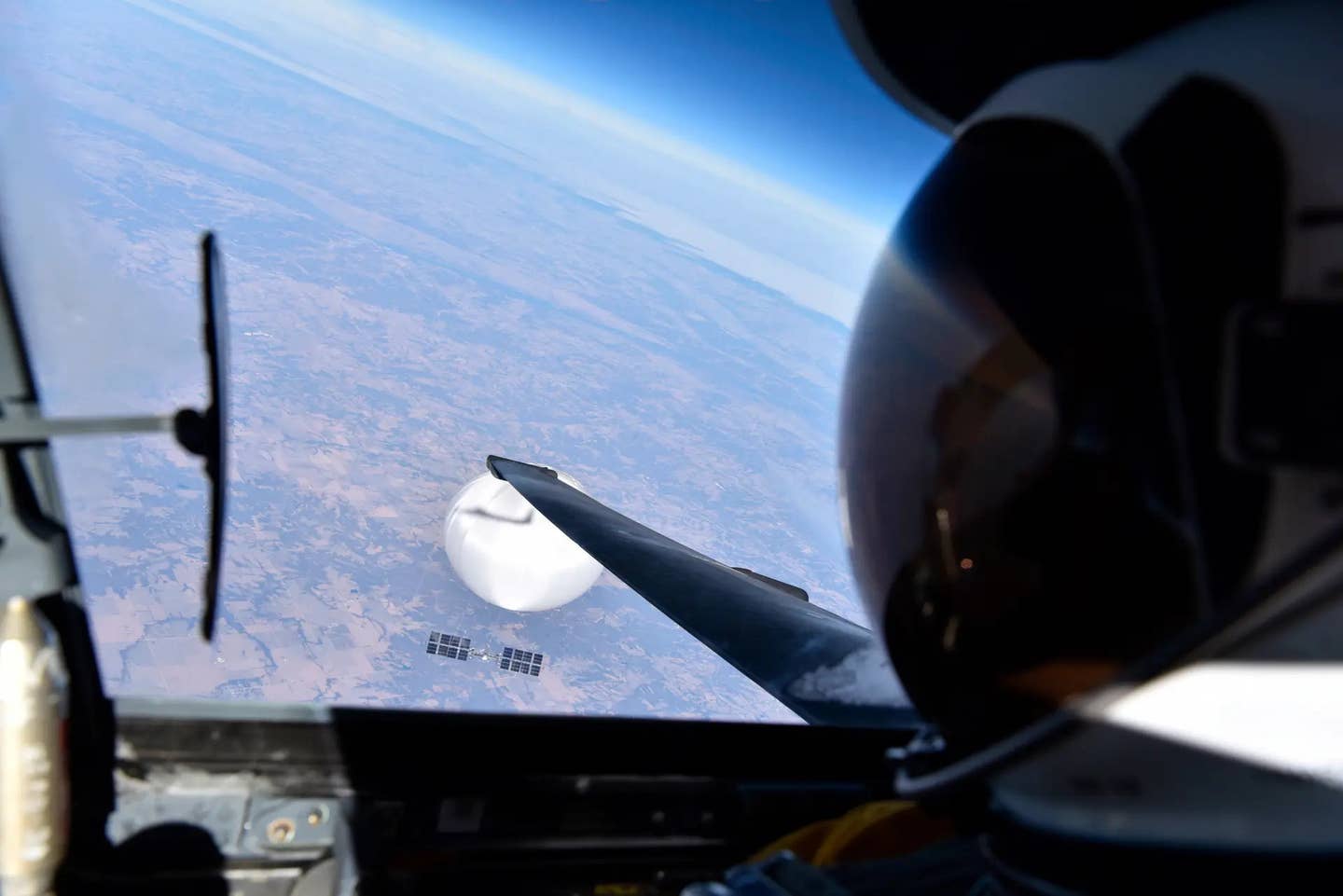Pilots Are Seeing Some Very Strange Things In Arizona’s Military Training Ranges
U.S. fighter jets are having worrisome aerial encounters in Arizona’s restricted air combat training areas, which fits with a broader trend.
- These incidents and many more, all occurred in or around various military air combat training ranges in Arizona since January 2020.
The events are described in reports from the Federal Aviation Administration (FAA) filed over roughly a three-year period.
- Overall, the data points to what are often categorized as drones, but many of which are actually unidentified objects, as well as what do appear to be drones, or uncrewed aerial systems (UAS), intruding into these restricted warning areas with alarming regularity.
Marc Cecotti, a contributor to The War Zone, has been able to obtain additional partially redacted reports about a number of these incidents from the U.S. Air Force's Safety Center via the Freedom of Information Act (FOIA) that provide additional insights.
Cecotti, together with Adam Kehoe, another one of our contributors, had first begun to notice a clustering of reports of unusual aerial encounters in southwestern Arizona back in 2021.
An interactive online tool they created for The War Zone that leverages the FAA's public database of drone-related incident reports helped highlight that trend.
The Reports
There have been a number of encounters between military aircraft and what are described as groups of craft flying together in the past three years or so in this specific part of the United States. . . .
Arizona Is Host To Major Air Combat Training Areas
When it comes to the Air Force, Arizona is home to Luke Air Force Base and Davis-Monthan Air Force Base.
Luke has long been a major training hub for U.S. Air Force and foreign F-35 and F-16 pilots, though its work with the F-16 has been steadily diminishing in recent years.
Davis-Monthan currently hosts units flying a variety of aircraft, including A-10 Warthog ground attack jets and EC-130H Compass Call electronic warfare planes, as well as the unit that oversees the U.S. military's famous boneyard that is part of the sprawling installation.
- Units of the Arizona Air National Guard also operate from various bases in the southern end of the state. This includes Morris Air National Guard Base, which is collocated with Tucson International Airport in the city of the same name and that also hosts the Air National Guard-Air Force Reserve Command Test Center.
- Marine Corps Air Station (MCAS) Yuma, a major test and training base for that service that hosts multiple F-35 squadrons, as well as units flying various other aircraft, is some 140 miles southwest of Luke.
Arizona has a number of major training ranges with restricted airspace, including significant areas adjacent to Luke AFB and MCAS Yuma.
- In fact, a large swathe of Arizona's border with Mexico sits under these ranges, including the Barry M. Goldwater range.
- There are a number of other designated Military Operating Areas (MOA), which can readily, if temporarily be closed off for training, elsewhere in the state.
- Restricted airspace and MOAs are all included in what the FAA more broadly refers to as Special Use Airspace (SUA).
The reports of unidentified objects, especially the ones involving groups of them flying together, are particularly interesting given the surge in interest in recent years in what are now often referred to as unidentified aerial phenomena (UAP), but have previously been more commonly known as unidentified flying objects (UFO).
Members of Congress are increasingly pushing for more declassification and general transparency from the U.S. military and Intelligence Community on these matters. These calls from legislators have only grown in the wake of allegations of a massive coverup from intelligence official and Air Force veteran turned whistleblower David Grusch, which you can read more about here.
...
A growing national security and flight safety problem
- This includes classified channels and makes it difficult to easily get a sense of the full picture of what's going on – even for U.S. government officials themselves.
- That latter reality was laid bare by the fallout from the shootdown of a Chinese spy balloon off the eastern coast of the United States, as well as of three more still unidentified objects in U.S. and Canadian airspace, earlier this year.
- Radars and other sensors may be part of another possible emerging trend based on what we're seeing from the FAA logs and newly released HATR reports. This has to do with the sensitivity of the F-35's sensor suite coupled with its immense data fusion capabilities.
- The War Zone has previously pointed out that a growing number of UAP reports from Navy pilots in the past two decades may well be tied, at least in part, to the introduction of newer, more sensitive active electronically scanned array (AESA) radars to the mix through the fielding of later block F/A-18E/F Super Hornet fighter jets and the new E-2D Hawkeye airborne early warning and control aircraft.
At the same time, the F-35, in particular, has immediate additional ways to help positively identify any object of interest, including its Distributed Aperture System (DAS) and Electro-Optical Targeting System (EOTS). The jet's powerful electronic intelligence gathering (electronic support measures or ESM) suite is also a factor.
- The jet's AN/APG-81 radar, DAS, EOTS, and its ESM system can work together to detect, track and engage targets. Those targets can be detected in the infrared or radio frequency spectrum. If one sensor detects something either passively or actively, all those sensors can be immediately brought to bear on the target.
- This would all point to a significant amount of data being collected in encounters involving Joint Strike Strike Fighters even in the absence of direct visual (eyeball) confirmation.
- Older fighters also commonly carry targeting pods now that can be slaved to the jet's radar for long-range visual identification of aerial targets, as well.
- Even more advanced sensors are hitting the fleet, which you can read more about here.
If nothing else, the publicly available FAA logs together with the newly released Air Force data point to an increasing number of worrisome and potentially dangerous encounters with drones and other unidentified aerial objects. This includes ones that are clearly a very real hazard, as proven by the mid-air collision between the F-16 and the drone, in heavily trafficked military airspace in Arizona.
- The War Zone has reported extensively on incidents involving U.S. Navy aircraft operating in range areas along the country's eastern seaboard, as well as highly concerning drone swarm events around the service's ships in areas off the shore of southern California.
- There is evidence that facilities outside of the continental United States and overseas are noticing this general trend, as well.
All this begs the question, what are these things, some of which are seen in groups or with high-performance capabilities, doing in America's sensitive training ranges? Where are they coming from? In the case of the Arizona events, are some of them flying across the Mexican border?
- The adversary surveillance possibilities are very concerning, but clearly there are multiple potential explanations as to the wide array of objects that pilots are spotting where they shouldn't be spotting any at all.
The data also serves as further proof that this issue, in relation to America's sensitive domestic aerial training ranges, extends well beyond what has occurred in the warning areas off America's coasts.
Contact the author: joe@thedrive.com and tyler@thedrive.com









No comments:
Post a Comment